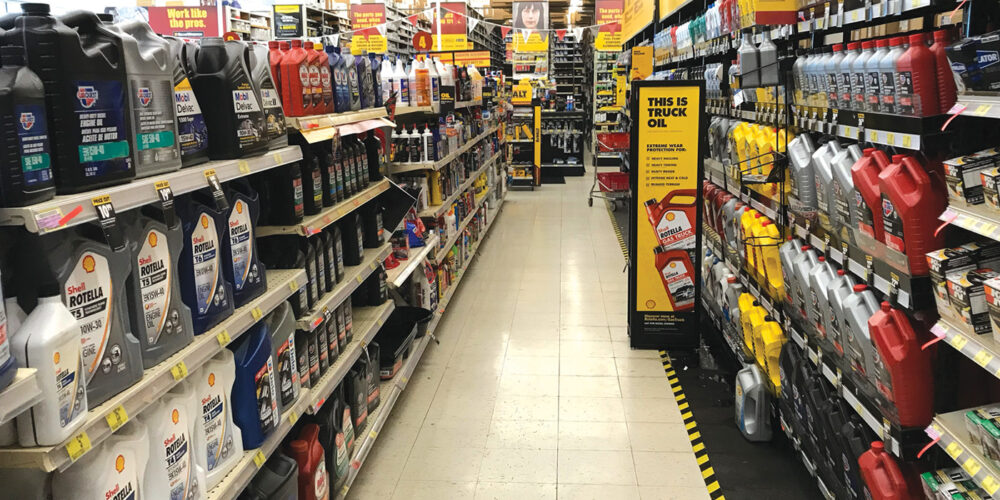Springtime is a season of change and renewal. The weather turns warmer, plants and flowers bloom into life and the days get longer. Like the local wildlife, DIY customers also are emerging from hibernation, eager to take advantage of the warmer weather so they can tackle projects in the driveway again.
If your store is in snow country like ours, spring also is a season of surprises. Anything that careless customers or the wind has “deposited” in your parking lot over the past few months will reappear as the snow melts. Now is the time to address these (and other) items, before your customers notice! A literal clean sweep of the parking lot also will reveal any weather-related damage like broken and heaved concrete, or cracked asphalt. Potholes might help drive sales of steering and suspension parts this time of year, but your parking lot shouldn’t be the place your customers encounter them!
Standing in the parking lot, you also can get a customer’s-eye view of your store’s exterior. Do faded signage and dirty windows make it look like you closed during the pandemic and maybe never re-opened? Speaking of opening and closing, if you have seasonal differences in business hours, verify that those posted hours are correct. (Your online presence also should accurately reflect these changes.) And even though the days are getting longer, interior and exterior lighting still are important safety and security concerns, especially if you keep extended hours. That dimly lit look isn’t doing you or your business any favors!
Once inside, your customers also should find fresh new merchandise on relevant seasonal displays. The idea of spring cleaning is often “out with the old, and in with the new,” so changing up the front of the house is in order this time of year. Refreshing your spring line doesn’t just mean dragging out last year’s old stock and hanging it out for sale. Mixing this year’s new-to-market products into the displays along with the “tried-and-true” items is a good way to showcase your refreshed new look. There’s no place for faded, worn or damaged goods in your seasonal displays, but saleable merchandise left over from the previous season should be rotated forward and sold as soon as possible (especially chemicals and wiper blades).
Those lingering unsold winter goods sometimes can present storage issues. On occasion, I’ve been guilty of “storing” off-season parts by tossing everything into totes or empty boxes to get them out of the way. There are two issues with this “method,” each of which I discovered the hard way.
The first issue is that these items still are in inventory, so if someone needs one of the parts, we waste a lot of time sifting through totes in search of a needle in a haystack.
The second issue is that when these parts are brought out again the following season, all of that sifting, sorting and shuffling makes the merchandise look pretty shopworn. Unless seasonal items are returned to your warehouse, a dedicated “off-season” shelving unit will help ensure that these parts stay organized and available and don’t suffer in storage.
Last but not least, our delivery vehicles likely are due for a thorough cleaning … inside AND out! Washing away the winter salt and road grime not only makes our fleet look professional, but it also increases the service life of our vehicles and bolsters our image in the community. National Spring Car Care Month begins in April, so before the public comes calling for their cleanup needs, this is the perfect time to take care of our own!












